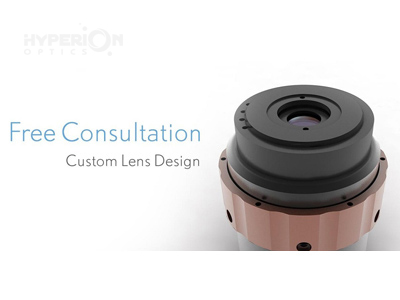Achromatic lens refers to an improved camera lens, which can reduce or eliminate the color difference. So that, different colors such as blue, purple, and yellow can be focused at the meanwhile. The color difference is a partial color blur, which is caused by the different refractive index of different color lights when the scene is imaged on a flat bottom plate or photosensitive emulsion layer through the lens. Through the special combination of the lens, the two main colors in the visible light can be focused at the same time to eliminate the above blur phenomenon. Today, almost all cameras use an achromatic lens.
The achromatic lens is composed of convex and concave lenses made of two glasses with different optical properties. Coronal glass with a small refractive index and large dispersion ability is often used to make a convex lens, and flint glass with a large refractive index and small dispersion ability is used to make the concave lens. Generally, the difference lens can only overlap the image points of the two main color lights, to eliminate the color difference of the two-color lights.
A difference lens is a lens made of two optical components, positive low refractive index, and negative high refractive index. Compared with a single-chip glass lens, the glued design of a double lens can provide users with additional design freedom and further optimize lens performance. Therefore, compared with the single-chip lens with equal diameter and focal length, the achromatic lens has more obvious advantages. The difference lens is formed by bonding concave and convex lenses made of two glasses with different optical properties. It is often used for convex lenses made of glass with a small refractive index and large dispersion power, and concave lenses made of glass with a large refractive index and small dispersion power. The achromatic lens can only overlap the images and points of the two main color lights, to eliminate the color difference of the two-color lights.
Chromatic aberration is the difference in dispersion and refractive index of light at different wavelengths in glass, resulting in different focal points of light at different wavelengths. Using the combination of different materials, such as the combination of coronal plate and flint glass in convergent lens and divergent lens, the dispersion of each glass can be compensated by another glass, to reduce the comprehensive 2chromatic aberration.
The achromatic lens has various types of configurations, including positive difference lens, negative difference lens, triple difference lens, and aspheric difference lens. It should be noted that the different lenses can be double elements or three-element, and the number of elements is independent of the number of light corrected by the lens. In other words, the difference lens of double or triple combination configuration can correct red and blue light in the visible light range.

 Call us on:
Call us on:  Email us:
Email us:  R&D Center: 9B-4F 401,No.1 Qingnian Road Liando U Valley,Yuhua International Wisdom Valley, Nanjing, 210039 China
R&D Center: 9B-4F 401,No.1 Qingnian Road Liando U Valley,Yuhua International Wisdom Valley, Nanjing, 210039 China









 English
English  cn
cn  de
de  es
es  fr
fr 


